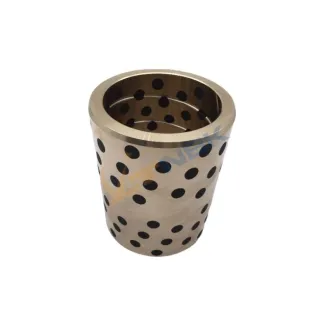When to Replace Steering Rack Bushings and How to Check Them?
Feb. 19, 2024
Steering rack bushings are crucial components of your vehicle's steering system, responsible for maintaining stability and reducing vibrations. Knowing when to replace them and how to check their condition is essential for safe and efficient driving. In this comprehensive guide, we'll explore the signs indicating the need for steering rack bushing replacement and walk you through the process of inspecting them for wear and damage.
Understanding Steering Rack Bushings
Steering rack bushings are rubber or polyurethane components that provide cushioning and support for the steering rack assembly. They help absorb road vibrations, reduce noise, and ensure smooth steering operation. Over time, these bushings can deteriorate due to factors such as age, exposure to harsh conditions, or heavy usage, compromising steering responsiveness and overall vehicle handling.
Signs that Steering Rack Bushings Need Replacement
Excessive Steering Play: If you notice increased play or looseness in the steering wheel, it could indicate worn-out bushings. Excessive play may result in delayed or imprecise steering response, affecting your ability to control the vehicle.
Vibration and Noise: Worn or damaged bushings can lead to increased vibration and noise, especially when driving over rough or uneven surfaces. You may feel vibrations transmitted through the steering wheel or hear clunking or knocking sounds from the front suspension.
Uneven Tire Wear: Inspect your tires regularly for signs of uneven tread wear, such as scalloped or cupped patterns. Faulty steering rack bushings can cause erratic steering alignment, leading to premature tire wear and compromising traction and stability.
Visible Damage: Perform a visual inspection of the steering rack bushings for signs of damage, such as cracks, tears, or deformation. Additionally, check for any leaks around the bushing area, as leaking power steering fluid can accelerate bushing deterioration.
How to Check Steering Rack Bushings
Visual Inspection: Start by visually inspecting the steering rack bushings for any signs of wear or damage. Locate the bushings on the steering rack assembly, typically positioned where the rack connects to the vehicle's chassis or subframe. Look for cracks, tears, or deterioration in the rubber material.
Physical Examination: With the vehicle safely lifted and supported on jack stands, perform a physical examination of the bushings by applying pressure with your hands or a pry bar. Check for excessive movement or play in the bushings, indicating wear or looseness. Bushings should provide resistance and remain firmly in place.
Road Test: Take the vehicle for a test drive to assess steering responsiveness and overall handling. Pay attention to any unusual noises, vibrations, or changes in steering feel, as these could indicate worn or damaged steering rack bushings.
Professional Inspection: If you're unsure about the condition of your steering rack bushings or lack the necessary tools and experience, consider having them inspected by a qualified mechanic or automotive technician. They can perform a thorough assessment and recommend appropriate repairs or replacements if needed.
Conclusion
Maintaining properly functioning steering rack bushings is essential for safe and enjoyable driving. By recognizing the signs of worn or damaged bushings and knowing how to check their condition, you can address potential issues early and ensure optimal steering performance. If you suspect that your steering rack bushings need replacement, don't hesitate to consult a professional for expert diagnosis and repair.
43
0
0
None
None


Comments
All Comments (0)